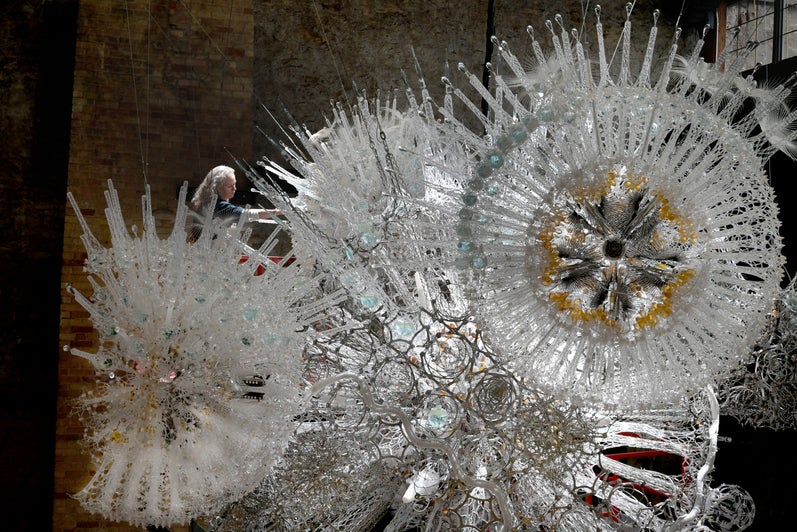Philip Beesley's research questions frame an empathetic, sensitive, humane, and sustainable future for the built environment, asking: can architecture come alive, responding, thinking, and caring about us? What subtle boundaries and depths within of our worlds, across nature and across phenomena, can be seen and felt? If they can be seen and felt, might they offer the emplacement of architecture? How can responsive, interactive and artificial-intelligence systems that are emerging within contemporary architecture combine into the new discipline of living architecture? Can divided humanities and technical practices combine within this new discipline to achieve circular economies, biosource materiality and human agency?
Beesley's art expressions within visual media, multidisciplinary design and couture disciplines are accompanied by theory, cultural-historical context, design paradigms, and by open-source reproducible models and patterns. This work includes three objectives: 1. New sustainable materiality: Design innovative resilient and sustainable scaffolds by integrating lightweight next-generation materials supported by circularity methodology. 2. New dissipative topologies: Establish physical networks of resilient living architecture organized by precarious geometries that permit radical distribution of responsive systems, in fields of empathetic machinic behaviour. 3. New worldmaking conversations: Initiate new kinds of conversations between humans and sentient architecture by designing interfaces and controls coupled to digital twin virtual spaces, seeking mutual relationships infused with the generative fields of comprehensive pattern languages and system descriptions.
View University Professor Philip Beesley's faculty profile.



















